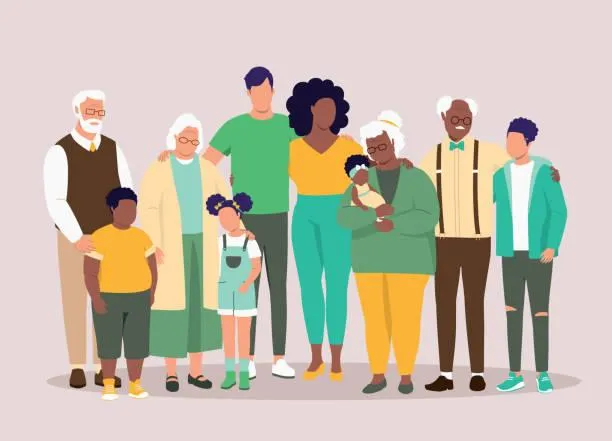
Diverse Family Dynamics
Only Child, Big Family, or Blended Bunch? Every Family is Different, and That’s OK
Families come in all shapes and sizes, and that’s something worth celebrating.
Some families have one child, others have five. Some have step-parents, foster siblings, or grandparents as primary carers. Some children are raised by two mums, two dads, a solo parent, or a family friend who stepped in when needed most. Some live with siblings close in age, others help care for a brother or sister with additional needs. There are countless ways to be a family, and every one of them matters.
Children are naturally curious, and as they start school or join clubs and social groups, they’ll begin to notice that not every family looks the same. That’s why it’s so important to help them understand and take pride in their own family story.
Why Family Representation Matters
When children see their family reflected positively in books, TV, and conversations at school, it helps them feel seen and accepted. But when their family setup feels "different" from their friends’, it can sometimes lead to awkward questions, or even unkind comments.
By talking openly at home, we can give children the language and confidence to explain their family dynamics with pride. We can also help them grow into thoughtful, inclusive friends who recognise and respect the different lives of others.
Let’s explore a few examples of modern family life, and some helpful ways to support children in talking about them.
The Only Child
Only children often get labelled as “lonely” or “spoilt”, neither of which is true. Some families have one child by choice, others due to circumstance. Either way, being an only child can mean rich adult relationships, deeper one-on-one time with parents, and plenty of independence.
Supportive language for kids:
“My family is just me and my parents, and I love having lots of time with them.”
“I don’t have brothers or sisters, but I have lots of cousins/friends I’m close to.”
Big Families
Families with three, four, or even more children often come with a lot of love (and a lot of laundry!) Kids from bigger families may share bedrooms, toys, or responsibilities.
Supportive language for kids:
“I have three siblings, and it’s always busy at our house, but we have lots of fun together.”
“Everyone in our family helps each other out.”
Blended Families
Many children live between two homes or have step-parents, half-siblings, or bonus relatives. Navigating those changes can be tricky at times, but blended families can be full of love and connection, too.
Supportive language for kids:
“I have two homes, one with my mum and one with my dad, and I get special time with both.”
“My stepmum is a really important part of my life. She helps look after me, just like my parents do.”
LGBTQ+ Parents
Families with two mums, two dads, or non-binary parents are wonderful and valid. Sadly, children can sometimes face questions from peers simply because others aren’t familiar with their setup.
Supportive language for kids:
“I have two mums, and they both love me very much.”
“Families can be made in lots of different ways! Mine has two dads and a dog, and I wouldn’t change it for the world!”
Children with Additional Needs or Sibling Carers
In some families, a sibling may need extra care or support, and sometimes children take on caregiving roles themselves. These situations build empathy and responsibility, but kids might need help explaining them to peers.
Supportive language for kids:
“My brother has autism, so sometimes he finds noise tricky, but he’s really good at puzzles.”
“I help out at home because my sister needs support. It makes me proud to be part of her team.”
Solo Parents or Grandparent Carers
Whether by choice or circumstance, many families are led by one parent or a grandparent. These families are often close-knit and resilient, but children may face questions at school.
Supportive language for kids:
“My dad and I are a great team.”
“I live with my nan and grandad. They take care of me, and we have lots of laughs together.”
Found Families
Some children are raised by family friends, foster carers, or adoptive parents. What matters most is the love and support they receive, not how the family came to be.
Supportive language for kids:
“My family found each other in a special way! We might not all look the same, but we belong together.”
“I was adopted when I was little, and now I live with people who love me lots.”
Helping Children Feel Confident About Their Family
No matter your family setup, here are some gentle ways to help your child feel proud and prepared to talk about it:
Use inclusive books and stories. Choose stories that reflect different family types so your child sees theirs, and others, as normal and valued. “The Family Book” by Todd Parr and “My Brother Charlie” by Holly Robinson Peete & Ryan Elizabeth Peete are terrific examples of picture books that celebrate diverse families and situations.
Practice simple scripts. Roleplay common questions kids might get and help them feel comfortable responding with positive language.
Talk about diversity. Celebrate differences not just in families, but in abilities, cultures, and traditions too.
Model pride. Speak openly and positively about your family dynamic, even if it’s not what others might expect.
Encourage curiosity and kindness. Help your child understand that just as they want to be accepted, they should show the same kindness to others with different family stories.
Whatever your family looks like, one thing remains the same: children thrive when they feel safe, loved, and accepted. By normalising all types of families, we help raise a generation that understands there’s no such thing as a “normal” family. Just people who care for each other, show up for each other, and call each other home.